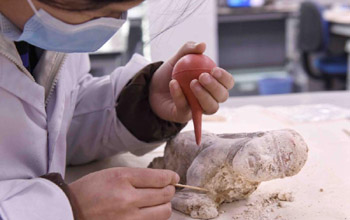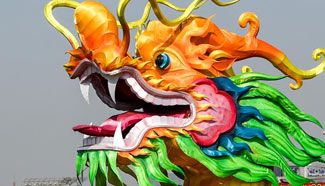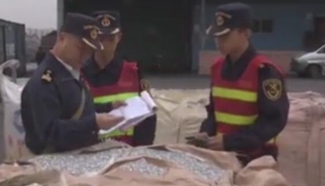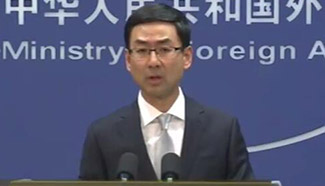by Xinhua writer Yuan Quan
BEIJING, Feb. 28 (Xinhua) -- Advanced technologies are bringing Beijing's torn-down city gates to life - and it started with a small girl's question for her father.
Subway travelers in Beijing can now see the city's long-gone city gates, using their smartphones to overlay historic scenes on the actual sites in the modern metropolis. The technology used is augmented reality (AR).
Using smartphone app, a three-dimensional animation of the city gates appears to overlay the actual site, along with a short commentary on the long-gone buildings.
These virtual history lessons were the brainwave of Li Yingchao, 34, an AR engineer with Chinese tech giant Baidu - but the inspiration was his 4-year-old daughter.
Li and his daughter were traveling on Beijing's Subway Line Two, which follows the line of the old city wall, when the girl asked, "Why do so many stops have the word 'men' (gate) in their names?"
Eight stations are still named after the dismantled gates.
THE OLD CITY
Beijing, China's capital since the 13th Century, once had 20 city gates, which were built as key passages for different social classes - including the imperial family, civil and military officials, ordinary people and even criminals - to come and go from the city.
In the Ming and Qing dynasties, it had nine big city gates. In the 1960s, they were mostly pulled down with the city wall, to build new roads and subways and to expand the metropolis.
The city planners only left "one and a half" city gates. The one gate is Zhengyangmen, on the south-north axis of Beijing at the south end of Tian'anmen Square. The "half" is the Deshengmen archers' tower.
This was new to Li. Born in Shandong Province, he arrived in Beijing in 2000 to go to college. Then, he found work, got married and had a daughter in the capital. But he knew little about its past.
He decided to use the AR technology to "rebuild" city gates.
His idea resonated with his team of more than 20 developers.
Passengers slowed down in crowded stations and tried the technology. Some enjoyed taking selfies with the virtual model.
"It (AR) helps people to learn the history and the changes of the city," says deputy curator Hu Daxin of Beijing Planning Exhibition Hall.
A SHARED DUTY
The production was shared online and became a public project.
"I was born in the 1940s in Beijing, and I saw the city gates - great world heritage treasures," said a post on the WeChat social network. "When my child told me of their 'revival', I wanted to see."
However, some frowned on the project saying it provided inaccurate information.
The tech engineers received e-mails and comments saying the project had some mistakes.
The AR engineers realized how serious the issue was. "We had a bigger responsibility," says Li.
People can now see the AR effects at home by searching for the gate names online.












